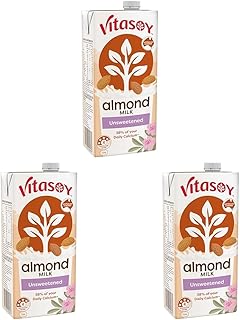As the trend of moving away from dairy gains momentum, the plant-based milk market has seen a significant surge in popularity. Consumers now have a plethora of options to choose from, including soy, almond, oat, and rice milk. However, navigating through this array of choices to find the healthiest alternative can be a daunting task.
Experts advise looking beyond marketing claims such as “light” or “no added sugar” and focusing on key factors like protein and calcium content, added sugar levels, and ingredient lists. The ideal milk alternative should mirror the nutritional profile of cow’s milk, providing ample protein and calcium while minimizing added sugars and artificial additives.
When comparing nutritional values, cow’s milk typically contains around 120 calories, 200 mg of calcium, and a modest amount of naturally occurring sugar. Soy milk, derived from soaked and ground soybeans, offers protein levels similar to cow’s milk, although flavored varieties may contain added sugars. Unsweetened soy milk, with its lower calorie count and high protein content, emerges as a top contender for a nutritious milk alternative.
Almond milk, primarily made from almond extract and water, tends to have minimal protein content and may include additives like emulsifiers and sweeteners. Oat milk, rich in carbohydrates, often contains stabilizers, emulsifiers, and added oils. Rice milk, another carbohydrate-rich option, is typically fortified with calcium but may also contain added sugars and vegetable oils.
For those seeking a milk alternative closely resembling cow’s milk in terms of nutritional value, unsweetened soy milk stands out as a superior choice due to its high protein content and absence of added sugars. In contrast, almond, oat, and rice milk options generally offer lower protein levels and higher sugar and carbohydrate content, along with industrial additives, resulting in a less nutritionally dense profile.
As consumers navigate the array of milk alternatives available, it is essential to scrutinize nutritional labels, opting for products with adequate protein and calcium levels and minimal added sugars. Making informed choices based on individual dietary needs and preferences can help ensure that the selected milk alternative aligns with one’s overall health goals.
Offering insights into the evolving landscape of plant-based milk alternatives, Luda Nevo, a chief clinical dietitian at Sabar Health, emphasizes the importance of selecting products that strike a balance between nutritional content and minimal additives. As consumer preferences shift towards healthier and more sustainable options, the demand for transparent and nutrient-rich milk alternatives continues to grow.
📰 Related Articles
- Soy Milk: A Nutritious Dairy-Free Alternative with Health Benefits
- Top Soy Milk Makers: Expert Picks for Homemade Delights
- Soy Protein: A Versatile and Nutritious Meat Alternative Trend
- Top Vegan Snacks for Summer 2025: Delicious, Sustainable, and Nutritious
- Top 10 Clean Dairy-Free Milk Alternatives for Health-Conscious Consumers






